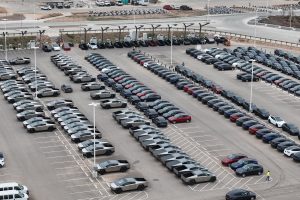Credit Direct is working on a tool that would make lending easier for Tesla buyers. The COO of CU Direct, Bob Child, said that the company expects to have a system working later this year. The tool will allow online Tesla buyers to pick a credit union as a lending option.
CU Direct’s main goal for the system is to “keep credit unions in the game,” Child said.
Tesla sells its electric vehicles directly to consumers instead of through dealers like traditional automakers. On its website, Tesla has a drop-down menu of lenders, some of which are credit unions. However, Tesla reportedly wants to limit the number of options on its drop-down menu.
According to Child, CU Direct’s agreement with Tesla will allow the company to develop a system that will list an option like “A credit union” in the drop-down menu of its configuration/payment page. Once a consumer picks the credit union option, a “decisioning engine” will direct the loan to a credit union that best fits the lender’s preferences for terms, credit scores, and other criteria.
Child also specified that one of the system’s goals is to allow credit unions to move in and out of the lender lineup. For instance, a credit union could pull back from the system if it believes it gained “too much EV concentration.”
In addition, the COO of CU Direct mentioned that more buyers are shifting from the new car sales market to the used car market. He noted that auto loans funding used vehicle sales have recently increased to about 77%. According to Credit Union Times, about 74% to 75% of auto loans funded used car sales.
Earlier this week, the Austin-based EV manufacturer announced that all Tesla vehicles delivered on or after April 15, 2022 are not eligible for purchase after their leases expire. Used Tesla cars are known for maintaining or sometimes even exceeding the price of new vehicles. Buyers who lease Tesla cars after April 25 can upgrade to a new vehicle or extend their lease agreement.
Child explained that various reasons had pushed buyers to look into the used car market, including higher interest rates, price hikes, and low vehicle production trends due to the chip shortage.
Tesla managed to maintain its vehicle production numbers in 2021. However, it raised prices across its vehicle lineup this year, following the start of the Ukraine-Russian war.





